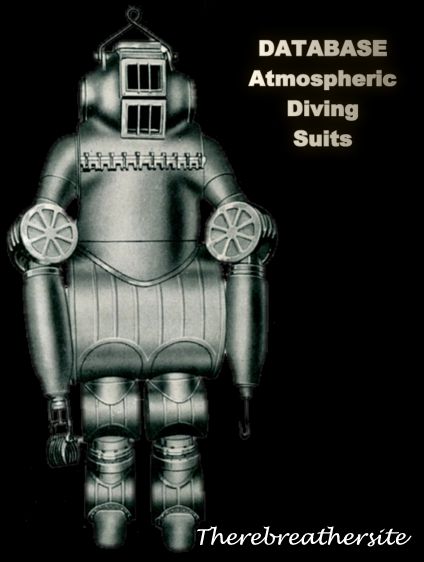
Strangely enough, the Frenchmen Octave Quenault and Gabriel Rouxin 1923 fell back on an old concept. They designed a metal diving suit over which a rubber suit had to be put on. The idea of preventing leakage in this way and providing the diver with atmospheric air was a principle that had been lying dormant for decades. Whether these gentlemen were aware of the existing atmospheric suits that had actually been built and were being used more or less successfully is unclear. The fact is that the design offered few new insights. Below is the description of the couple’s ideas.
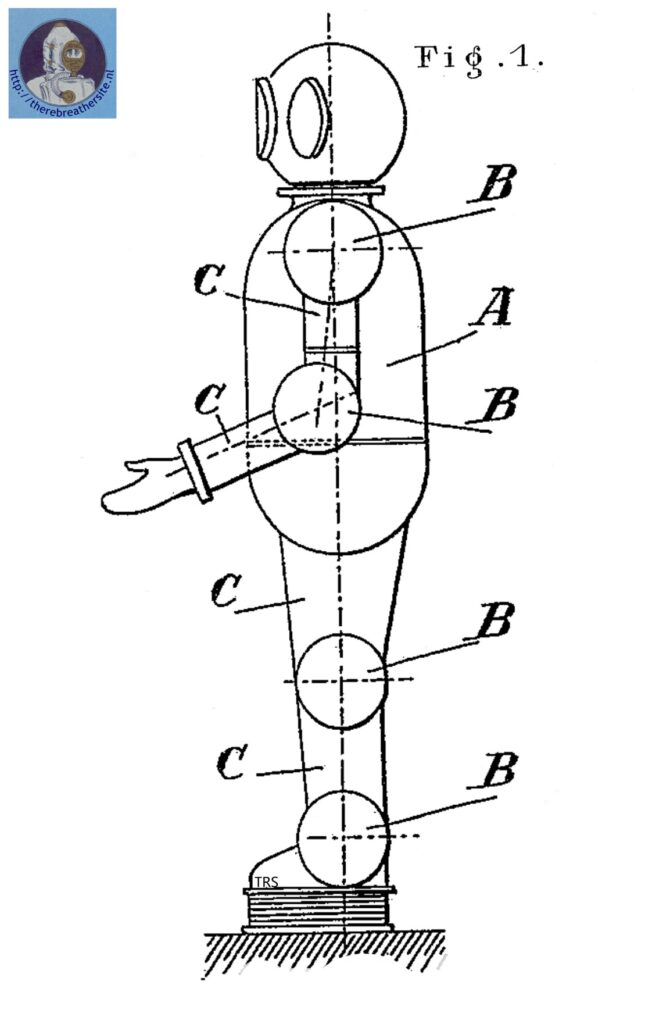
Description of the articulated diving suit. The object of the invention consists of an all-metal suit enabling divers to descend to great depths without being bothered by the external pressure exerted on the walls of the suit; joints, also made of metal, ensure the movement of the legs and arms, thus making it possible to work usefully and safely in the deep.
A rubber suit placed on the metal suit ensures that the latter is watertight. In the attached drawings, as an example of the implementation of the invention, Fig. 1 shows the whole metal suit and its joints seen from the side. Fig. 2 shows, on a larger scale, a cross-sectional view along the line 1–1 of Fig. 3; one of the joints of the arms of the metal suit. Fig. 3 is a front view of this articulation. Fig. 4 shows a plan view with a section cut along line 2-2 of Fig. 2 of the same joint.
The metal suit A is made of steel plate of sufficient thickness to withstand the pressures of the deep sea, in which a diver can practically descend. The armour is divided into several parts to allow the diver to put it on; these parts are connected to each other by means of joints B, the detail of one of which is shown in figs. 2, 3 and 4. The metal parts C covering the forearms, arms, thighs, legs and torso are cylindrical in shape; each part C receives the part D which allows the horizontal movement of the limb it covers; this movement indicated in fig. 4 by the arc of a circle b is limited by the stop E moving in the mortise -E’ made in part C. The second part F works with soft friction in part D; it allows, in its turn, the vertical displacement of the limb which it covers; this displacement is indicated in fig. 2 by the arc of a circle. A stop ring G supports the vertical pressure of the water on the parts thus connected. The connection of these identical parts to each other forms all the joints B of the diving suit A. In spite of its limited movements, the metal suit can carry out all rescue, repair and mooring manoeuvres, etc.
The metal armour, all the main surfaces of which have cylindrical shapes, offers great resistance to external pressure, thus avoiding the sending to the diver of over-pressurised air which could harm his respiratory organs, whereas in the usual suits, it is necessary to send air under pressure to the inside to balance the external pressure, which creates a danger for the diver.
A rubber suit, impermeable to air and water, makes the armour and its joints completely watertight. It should be noted that the articulation is made, with the system described, without changing the internal volume of the suit, which allows the diver to make movements without having to overcome the effort due to the external pressure and to always maintain a stable balance. It is understood that the dimensions, the shape of the joints and the metal used to make the articulated garment may vary without changing the general layout of the invention just described.
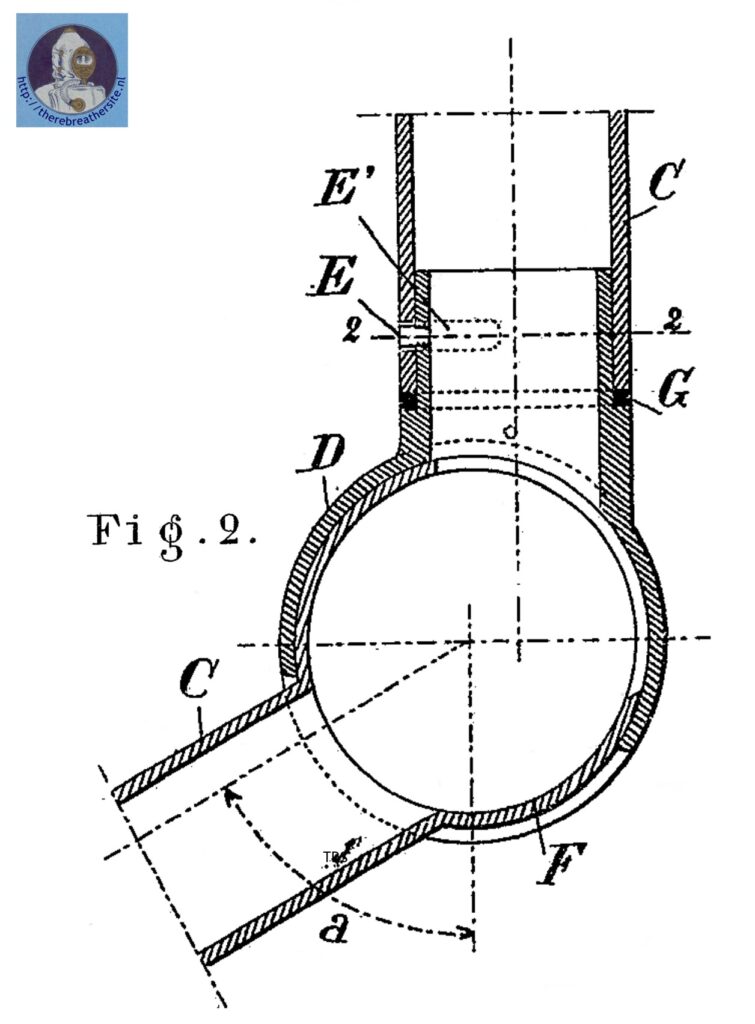
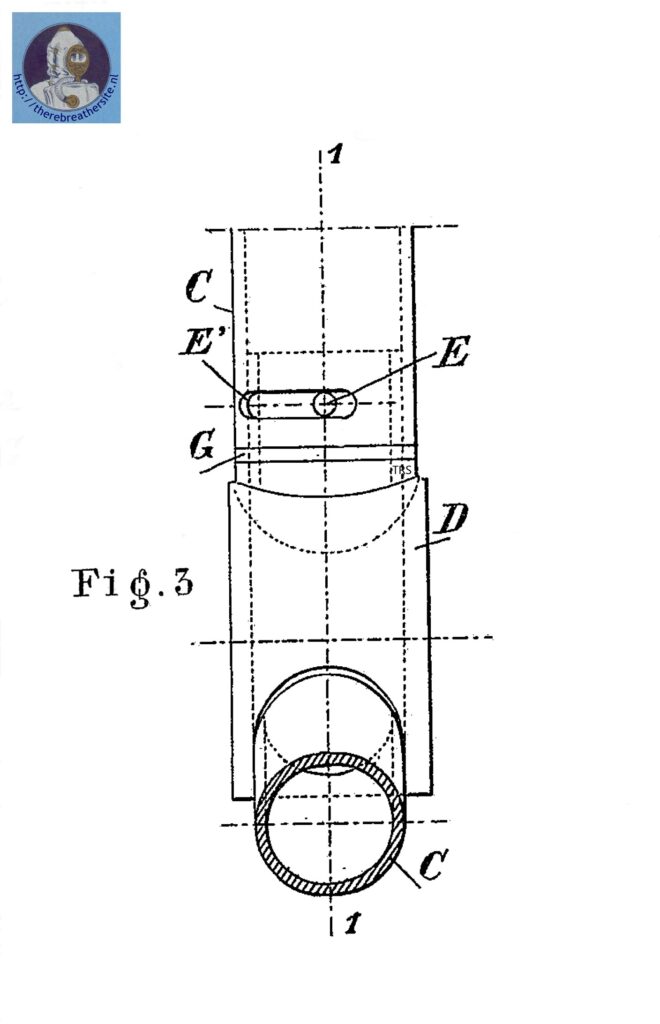
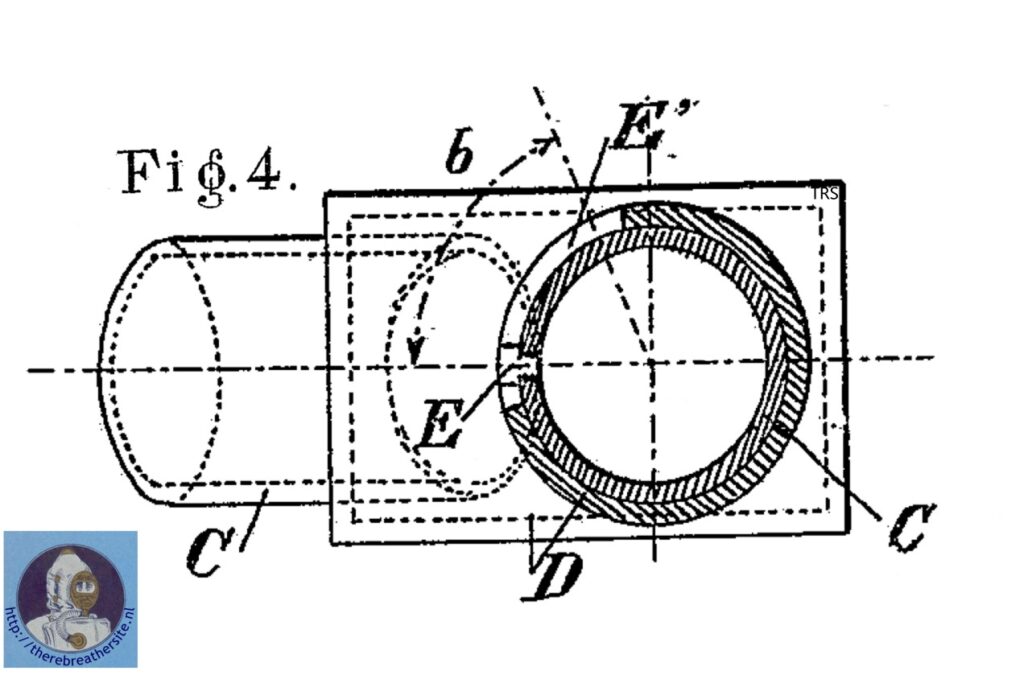

Therebreathersite was founded by Jan Willem Bech in 1999. After a diving career of many years, he decided to start technical diving in 1999. He immediately noticed that at that time there was almost no website that contained the history of closed breathing systems. The start for the website led to a huge collection that offered about 1,300 pages of information until 2019. In 2019, a fresh start was made with the website now freely available online for everyone. Therebreathersite is a source of information for divers, researchers, technicians and students. I hope you enjoy browsing the content!
